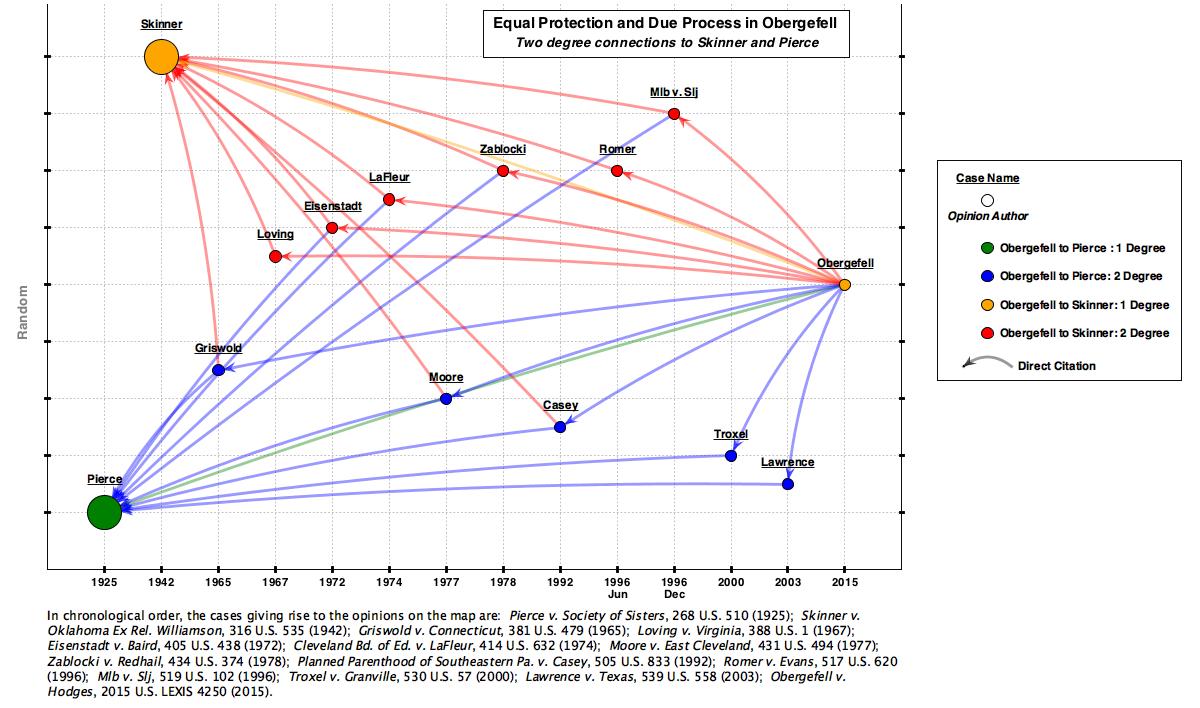The right of same-sex couples to marry that is part of the liberty promised by the Fourteenth Amendment is derived, too, from that Amendment’s guarantee of the equal protection of the laws. The Due Process Clause and the Equal Protection Clause are connected in a profound way, though they set forth independent principles… In any particular case one Clause may be thought to capture the essence of the right in a more accurate and comprehensive way, even as the two Clauses may converge in the identification and definition of the right. Obergefell v. Hodges, (2015)
In his Obergefell majority opinion, Justice Kennedy emphasized that due process and equal protection often work together to guarantee rights and ensure against discrimination. Although Justice Scalia characterized this idea as “incoherent,” it is undeniably true that the Court has invoked both due process and equal protection together to strike down discriminatory schemes in the family context. Consider the following (click to open full-sized image in a separate window):
The map above shows a network of cases cited by Kennedy in Obergefell that connect via direct citation back to either Pierce v. Society of Sisters or Skinner v. Oklahoma. Note that cases represented in blue cite back to Pierce and are generally regarded as due process cases (Pierce is a foundational substantive due process case). Similarly, cases represented in red cite back to Skinner and are generally regarded as equal protection cases (Skinner is a foundational equal protection case). Importantly, the Court struck down the discriminatory scheme at issue in all of the cases displayed in this network. And in most of these cases, the Court acted under both equal protection and due process — as shown by red and blue cite lines.
Now the network above does not represent all the precedent Kennedy cited in support of his idea of EP/DP convergence. Rather, the map uses citations back to Pierce and/or Skinner as a blunt proxy of this idea. Readers interested in the details of the cases can follow the links on the map above to the underlying opinions in Casetext. Alternatively, readers can open an identical map at this link, which in turn contains links to the Supreme Court Database instead of the opinions. Together the maps provide a useful starting point for investigations into the convergence idea.


I have read your writings and I have read articles on this topic in several articles from other sources. I got a lot of information from your writing, is there any other suggestions you can convey regarding the theme of your writing? so that I can get more and more complete information.
I certainly thank you for writing this article well, hopefully it will become a reference in journals or other scientific writings and can help many people. thanks.
Your article is very useful, the content is great, I have read a lot of articles, but for your article, it left me a deep impression, thank you for sharing.
wonderful post admin thanks for this information
This is a very useful article. i loved it
It’s an amazing post we are expecting more posts like this.
Great information thank you
Awesome article and well written . I appreciate your article. will share it on my social pages.